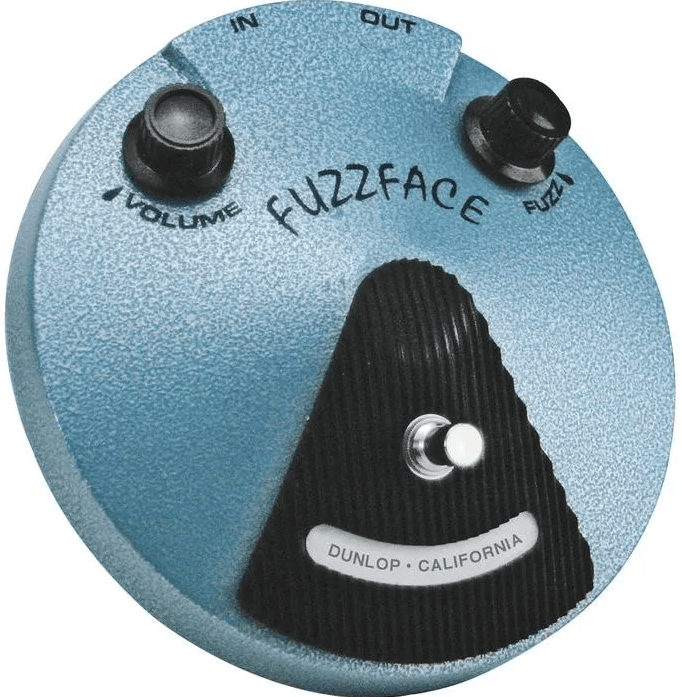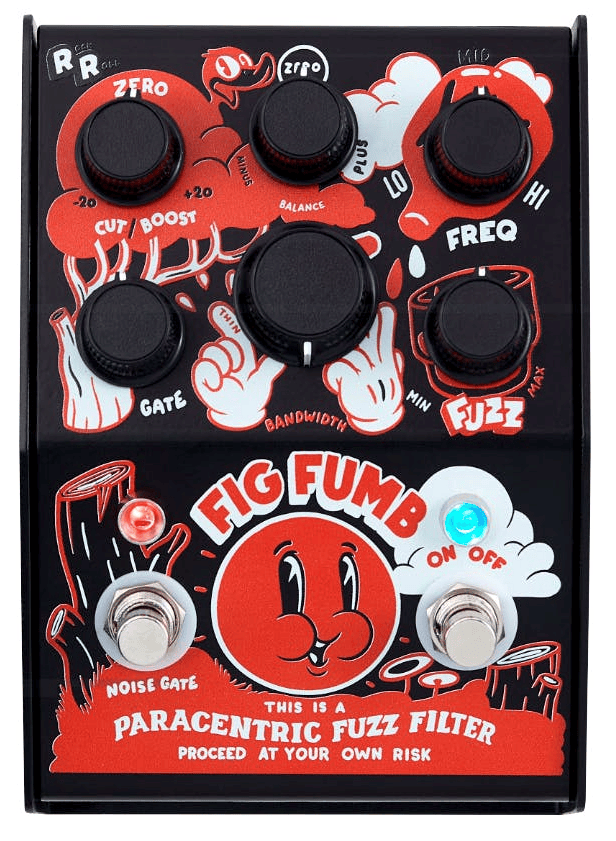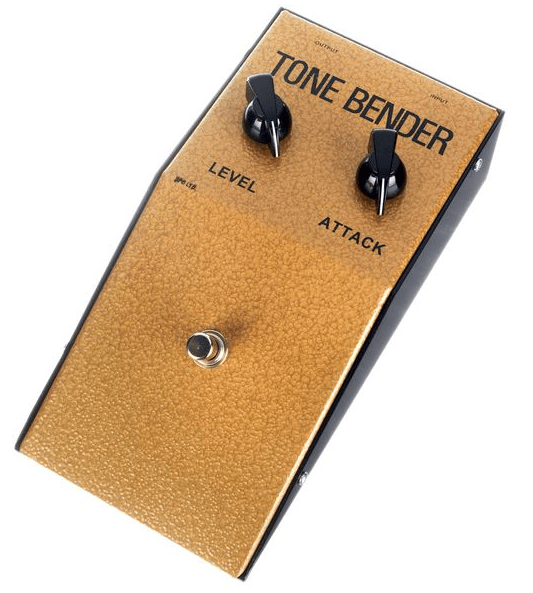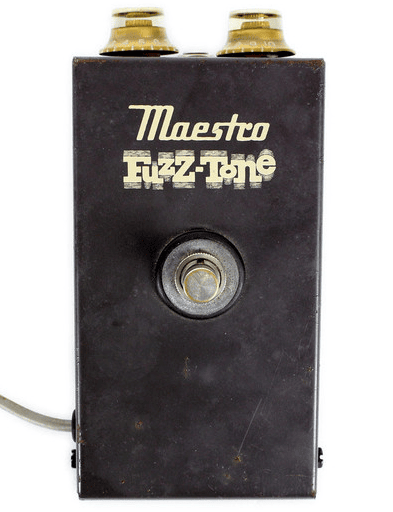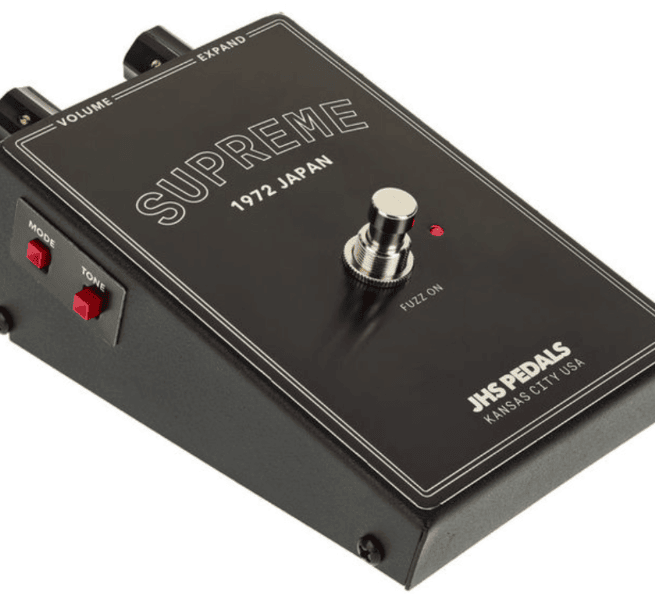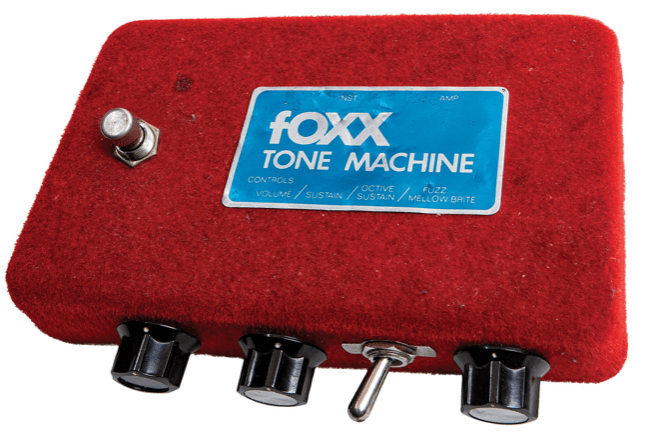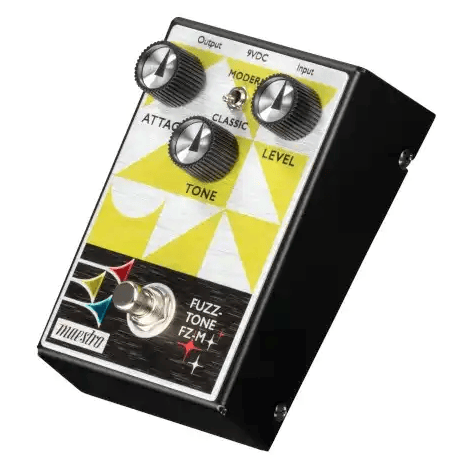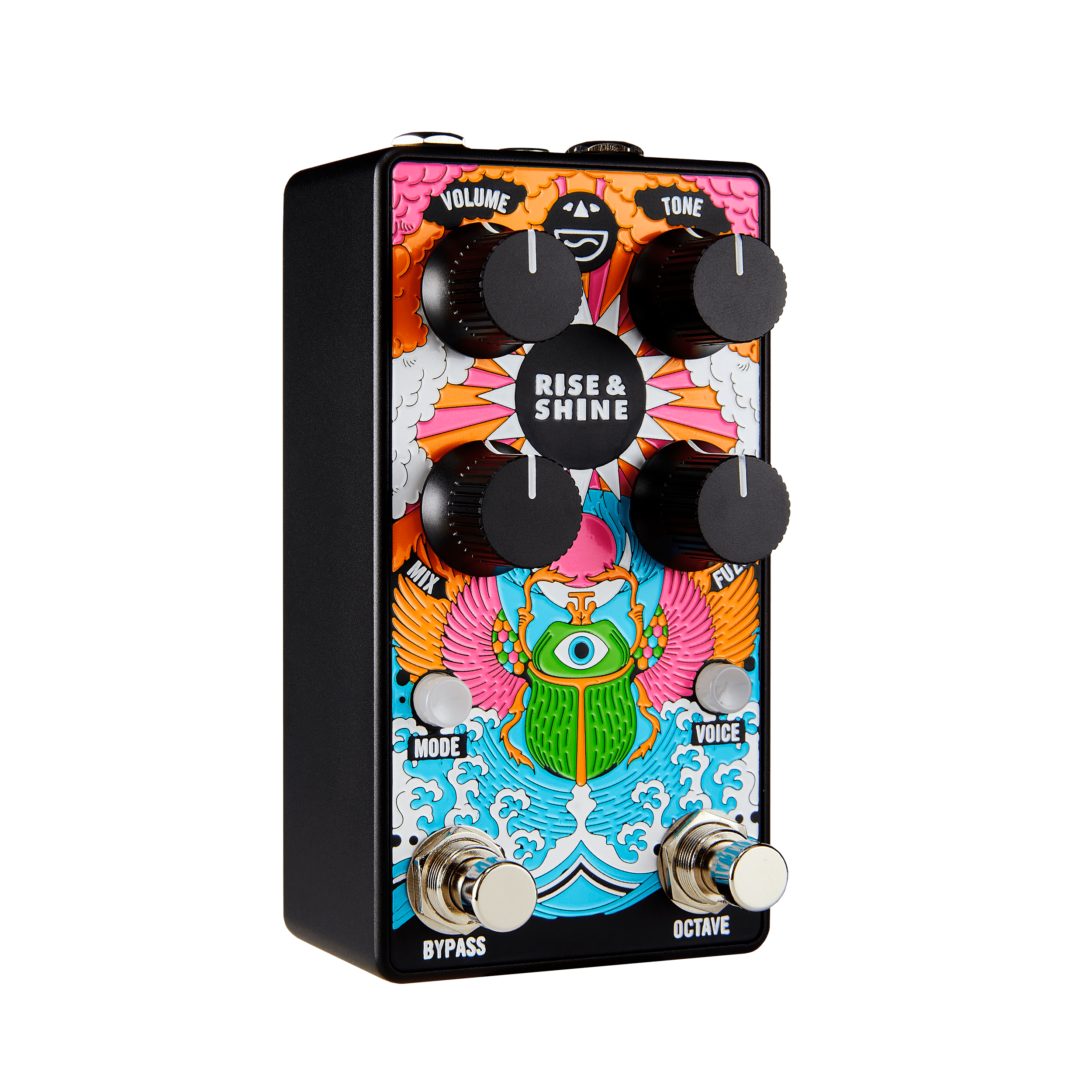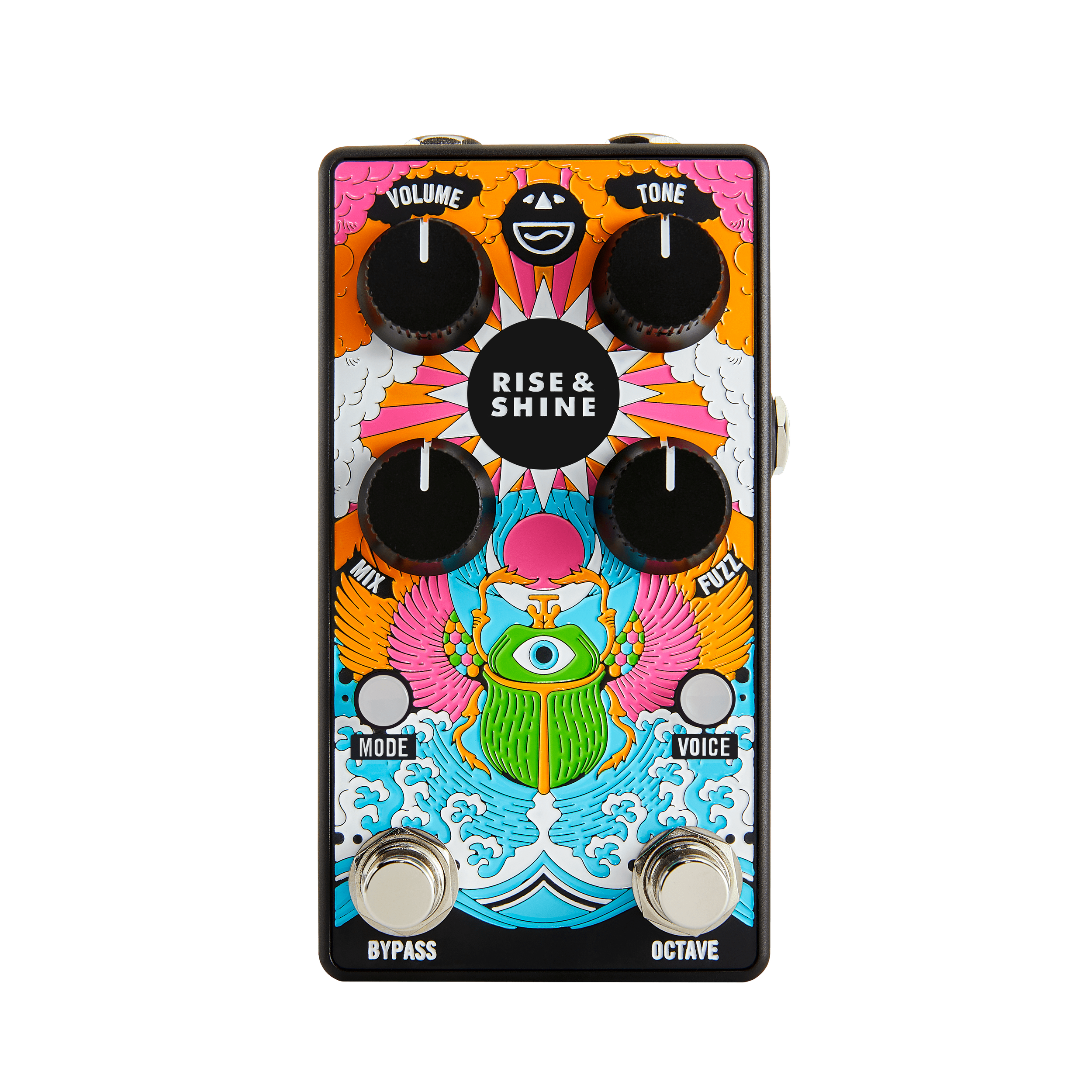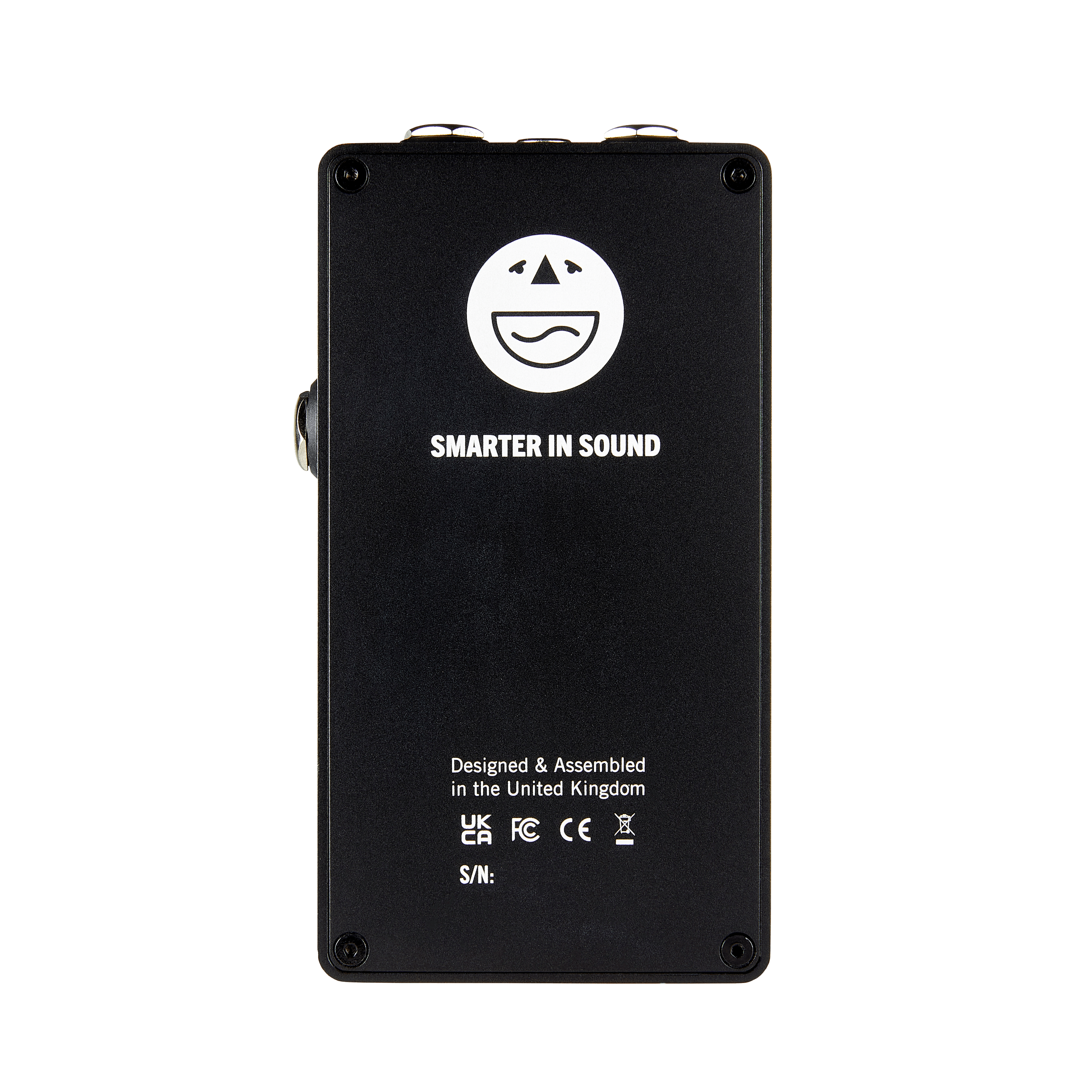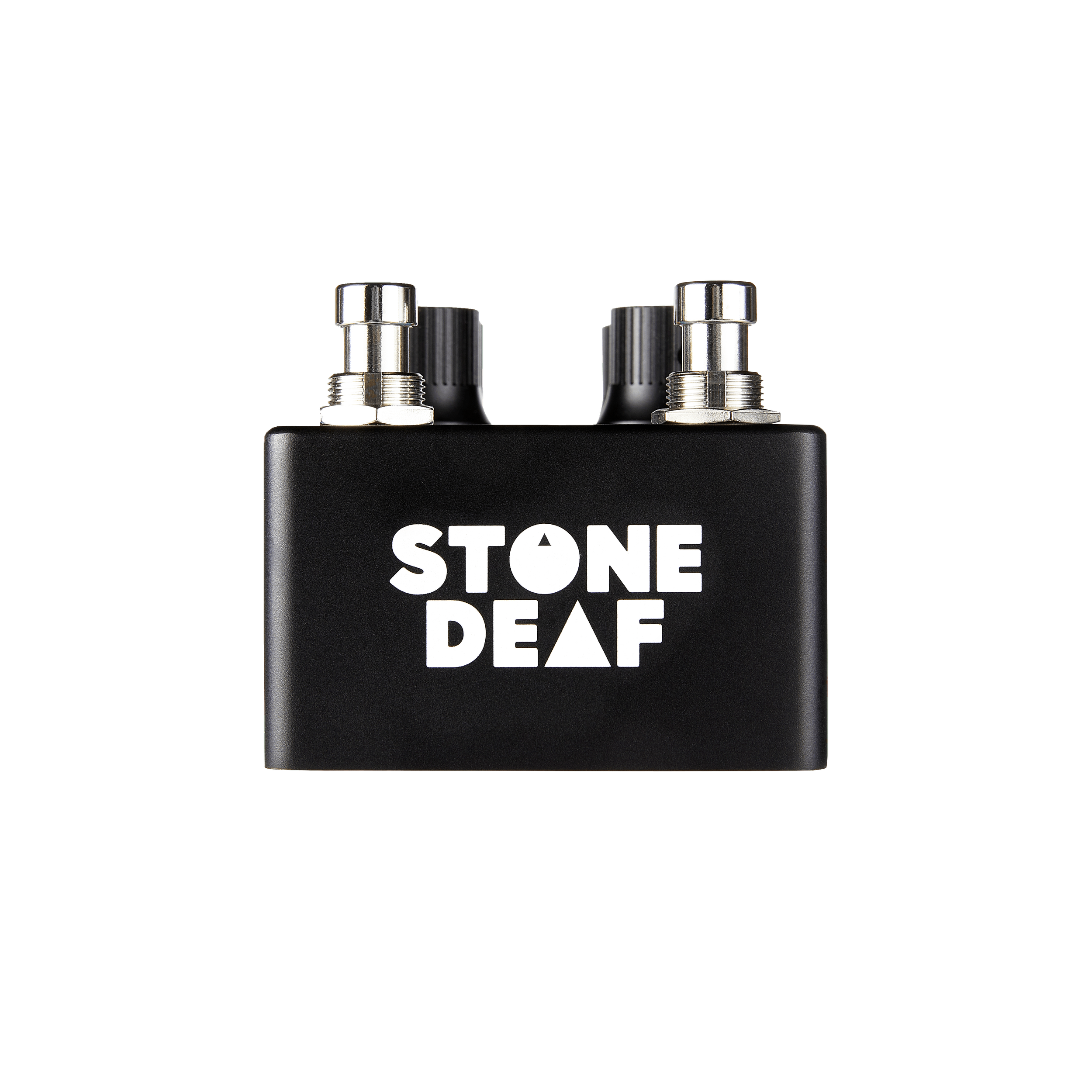What IS the BEST Fuzz Pedal?
Achieving a gritty guitar tone opens up a realm of creative possibilities, and there are various avenues to explore. Beyond relying solely on the natural distortion produced by a guitar amplifier, you can tap into a range of pedals, including boosts, overdrives, distortions, and fuzz pedals. In this guide, our primary focus will be on fuzz pedals, helping you navigate the selection process to find the one that best complements your musical aspirations.
The world of fuzz pedals tends to spark spirited debates among guitarists. Some find it challenging to incorporate fuzz into their playing repertoire, while others are fervent advocates, eschewing overdrive or distortion pedals entirely in favor of fuzz for all their distorted sonic needs. It's important to note that there exists a diverse array of fuzz pedal circuits, each endowed with distinct tonal characteristics. These pedals can vary in terms of compression, clean-up potential, gain levels, EQ options, and more.
To identify the ideal fuzz pedal to grace your guitar pedalboard, it's crucial to first envision the sound you're aiming to achieve. Consider your musical influences – which guitarists captivate your sonic sensibilities? If you're a devoted disciple of the legendary Jimi Hendrix, then the fuzz face pedal might resonate most profoundly with your musical aspirations.
On the other hand, if you're drawn to heavily saturated tones reminiscent of Jack White's signature sound, you might want to experiment with a big muff style pedal. Beyond these classics, the market today offers an extensive selection, spanning from vintage-inspired pedals to avant-garde stompboxes that defy convention and explore uncharted tonal territories.
Ultimately, it's advisable to try out any pedal you contemplate acquiring, ideally with your existing setup. Keep in mind that different guitars, pickup configurations, or amplifiers can wield a significant impact on your overall tone, and fuzz pedals can sometimes prove quite responsive to these variables. Moreover, certain amplifiers may interact more favorably with pedals than others, and the response of tube amps to fuzz pedals can differ from their solid-state counterparts.
Another factor to consider, your playing volume can exert a pronounced influence on the sonic outcome. The last thing you'd want is to fall head over heels for a pedal in the store, only to discover upon returning home that it fails to produce the same magic when paired with your specific guitar and amplifier setup.
Distinguishing Between Fuzz, Overdrive, and Distortion Pedals
When you wander through a music store, you'll often encounter guitar pedals categorized as overdrive, distortion, and fuzz, although they all adhere to a similar fundamental concept. These pedals serve as gain stages capable of distorting your guitar signal and infusing it with harmonics. The choice among them depends on the specific guitar tone you're aiming to achieve, making it essential to select a pedal that aligns with your musical requirements.
For instance, if your goal is to replicate the bluesy guitar tones of legends like BB King, Albert King, or Stevie Ray Vaughan, you won't necessarily require an aggressive distortion pedal, as it tends to introduce excessive gain. Instead, a gentle overdrive or boost pedal such as the Stone Deaf QBOOST pedal would serve your purpose more effectively. In any case, many of these pedals offer remarkable versatility, enabling you to explore a wide tonal spectrum with a single stompbox.
Now, let's delve into a basic overview of these three pedal types:
Overdrive Pedals
Overdrive pedals came into existence when musicians sought to capture the distinctive sound produced by tube amplifiers pushed to the brink of breakup.
By cranking up the volume and playing with added intensity, one can achieve a satisfying crunch sound and even a touch of distortion.
Unfortunately, this approach demands playing at high volumes, which isn't always feasible, particularly when practicing in a bedroom setting. Even a modest 10-watt tube amp delivers more volume than is typically necessary.
Enter the overdrive pedal, offering the ability to produce a mild crunch sound at any volume level. These pedals are also valuable when used to provide a clean boost to your signal. Among the most renowned overdrive pedals are the Boss SD-1, Ibanez TS-9, and the Stone Deaf PDF2.
Distortion Pedals
Distortion pedals represent a step up from overdrive, showcasing a more forceful, saturated, and compressed sonic character. These pedals have left an indelible mark in the realms of hard rock, grunge, and metal music.
Icons of this realm include revered models such as the Boss DS-1, Stone Deaf WARP DRIVE, and the ProCo RAT2, which have graced the pedalboards of countless guitarists.
Exploring Fuzz Pedals
Fuzz pedals take things even further, delivering a level of saturation that can be likened to the raw intensity of a heavily strained amplifier speaker.
Jimi Hendrix famously championed this electrifying sound with his use of the Dallas-Arbiter Fuzz Face pedal, paving the way for countless players to follow in his footsteps.
Diverse Fuzz Pedal Varieties
Fuzz pedals can be categorized based on their circuitry, particularly the number of transistors they employ. The quantity and composition of these components significantly influence the pedal's sonic signature.
It's worth noting that some musicians have a strong affinity for specific fuzz types, making it crucial to discover what suits your style. Investigating the pedals favored by your musical influences and experimenting with them is an excellent way to find your ideal fuzz companion.
While there are other fuzz topologies available, the following sections will delve into the most prevalent ones.
Fuzz Face-Style Pedals (Two Transistors)
Among the various fuzz pedals available in guitar stores worldwide, one of the most prevalent types is the two-transistor fuzz pedal. The pioneer in this category was the Vox V816 Distortion Booster, with the iconic Dallas-Arbiter Fuzz Face circuit following closely, making its debut in 1966.
The Fuzz Face pedal is renowned for its dynamic responsiveness, reacting sensitively to both your picking technique and your guitar's volume knob adjustments. This unique quality has endeared it to countless guitarists who prefer manipulating their tone solely through their guitar while keeping the pedal at full throttle.
Jimi Hendrix's adoption of the Fuzz Face catapulted it to stardom and inspired a multitude of guitarists, cementing its status as one of the most recognizable tones in the realm of rock music.
Tone Bender-Style Pedals (Three Transistors)
The three-transistor fuzz circuit was the initial creation in the world of fuzz pedals. In 1962, the groundbreaking Maestro Fuzz-Tone was introduced, making it the very first pedal in history—a distinction that sets it apart.
Keith Richards introduced the Maestro Fuzz-Tone in the iconic intro of "Satisfaction" by The Rolling Stones. While it wasn't originally intended for the song, the band was so captivated by its sound that they decided to keep it.
Early instances of three-transistor fuzz circuits also encompassed the Hornby Skewes Zonk Machine and the Marshall Supa Fuzz. These pedals boasted a valuable feature absent in fuzz face-type pedals: a Tone knob. This knob enabled users to fine-tune their EQ settings, facilitating more effective sound projection. Given that fuzz pedals can sometimes produce a darker tonal character, this feature proved highly advantageous.
Big Muff-Style Pedals (Four Transistors)
In 1969, Electro-Harmonix introduced the four-transistor fuzz circuit with the release of their inaugural Big Muff pedal. Since then, numerous iterations of this pedal have emerged, embraced by legendary guitarists such as David Gilmour and Billy Corgan to forge their distinctive sonic landscapes.
The Big Muff circuit stands out with its notably saturated and compressed sound, lacking the same degree of responsiveness as the Fuzz Face. Due to its high gain capability, it found favor among many grunge musicians.
Among the most renowned versions of this pedal are the Triangle Big Muff and the Ram's Head Big Muff. Subsequently, various pedal manufacturers have put forth their interpretations of this circuit, exemplified by offerings like the Earthquaker Devices Cloven Hoof, JHS Muffuletta, and the Stone Deaf Fig Fumb - which also boasts a built in studio quality noise gate and a 5 band parametric EQ filter giving guitarists complete control over the pedals tonal options.
Octave Fuzz Explained
The octave fuzz is an intriguing breed within the world of fuzz circuits. When you contemplate octave effects, devices like the Electro-Harmonix POG often spring to mind, creating octaves digitally. However, the octave fuzz circuit operates on an entirely different principle.
It essentially blends a high-octave sound into the traditional fuzz, creating the impression that you're simultaneously playing the same musical line, but 12 frets higher on your guitar.
The origin of this captivating effect dates back to 1967 when Roger Mayer devised the first of its kind and fittingly named it the "Octavia Fuzz." Mayer bestowed this innovative creation upon Jimi Hendrix as a gift, and Hendrix swiftly fell head over heels for the pedal's distinctive sound. It became a staple in Hendrix's studio recordings and electrifying live performances.
Examples of octave fuzz circuits extend beyond the Octavia Fuzz, encompassing iconic devices like the Foxx Tone Machine, the Fulltone Octafuzz and now the exquisite Rise & Shine by Stone Deaf Effects.
But how do you determine which type of fuzz suits your needs?
Embarking on your fuzz journey for the first time can be a daunting task due to the multitude of pedals available today. To make an informed choice, it's essential to familiarize yourself with the various types of fuzz pedals and pinpoint the one that aligns with your tonal aspirations.
For those inclined toward a vintage sound, the classic Fuzz Face design warrants consideration. These pedals pair splendidly with single-coil pickups and exhibit remarkable responsiveness to your guitar's volume knob, adding a layer of versatility.
Conversely, if you crave a grittier, more contemporary fuzz sound, experimenting with a Big Muff or its derivatives is the way to go. Modern iterations often offer increased gain, saturation, and additional EQ options, simplifying integration with your rig - the aforementioned FIG FUMB is a perfect example of this modern take on a classic.
Don't overlook combined options such as the KLIPTONITE which boasts two distinct overdrive AND fuzz circuits that can be used to blend your tones together, allowing you to dial in the perfect mix to suit your playing style.
From creamy, tube-like overdrive tones, searing fuzz madness associated with the Zvex Fuzz Factory, to a blended overdrive and fuzz sound, the Kliptonite has got you covered.
By tweaking the controls, you can go from a subtle, gritty drive to a full-on wall of fuzz. The internal Bias trim pot adds a unique character to the fuzz, allowing you to shape the tone to your liking.
From classic rock to modern doom, this pedal can do it all... the best dual fuzz overdrive pedal out there, hands down.
Here's a piece of advice: start by compiling a list of your favourite guitarists who employ fuzz in their signature sound. Investigate their pedal choices in both studio and live settings. Don't forget to consider the specific guitars and amplifiers they use, as these variables significantly impact the final sonic outcome. For instance, a Fender Stratocaster into a roaring Marshall stack delivers a distinct soundscape compared to a Gibson Les Paul paired with a solid-state amp.
Keep in mind that fuzz pedals exhibit unique responses with each rig, underscoring the importance of thorough consideration during your pedal hunt.
Given the intricacies involved, it's advisable to try out the pedal before making a purchase or inquire if your dealer offers a return policy within a specified window in case the pedal doesn't align with your expectations.
Frequently Asked Questions About Fuzz Pedals
When should I use a fuzz pedal?
Fuzz pedals find versatile applications in the world of guitar effects. If you seek a raw, unadulterated tone with the ability to shape it solely using your guitar's volume knob, a fuzz face-style pedal is an ideal choice. On the other hand, a big muff-type pedal offers a more consistently saturated sound and doesn't clean up as easily as a fuzz face. These are perfect for bands aiming to create a massive, harmonically-rich wall of sound.
Some pedals, like the Stone Deaf Kliptonite, venture into uncharted territory, producing unconventional and wild sounds not typically associated with fuzz pedals. Meanwhile, an octave fuzz pedal can cut through the mix by adding a high octave layer to your signal.
What is the best fuzz pedal?
Determining the best fuzz pedal is subjective, as fuzz pedals come in a wide array of sonic flavors. They react differently to factors like your guitar's volume knob and other pedals in your signal chain. Consequently, there's no universal "best" fuzz pedal. Instead, your choice depends on your preferred tone.
To make an informed decision, consider the sound you wish to achieve, seek advice from fellow guitarists experienced with fuzz pedals, and experiment with different options using your specific guitar and amplifier. Fuzz pedals come in various types, including fuzz faces, big muffs, tone benders, octafuzz, and more, offering ample room for exploration.
Which guitarists use fuzz pedals?
Part of Josh Homme’s pedal board ft. Stone Deaf PDF1
Many guitarists use fuzz pedals to achieve a distorted and saturated tone in their guitar playing. Fuzz pedals are popular among various genres, including rock, blues, psychedelic, and alternative music. Here are some well-known guitarists who have used fuzz pedals:
Jimi Hendrix: Perhaps one of the most iconic users of fuzz pedals, Hendrix used the Dallas Arbiter Fuzz Face to create his signature saturated, fuzzy tones.
Eric Clapton: Clapton used a fuzz pedal on his famous "Cream" era recordings, contributing to the heavy, creamy sound of the band.
David Gilmour: The Pink Floyd guitarist is known for using a Big Muff fuzz pedal to create the sustain and saturated lead tones heard on many of the band's classic tracks.
Jimmy Page: Page used a Tone Bender fuzz pedal on Led Zeppelin recordings, contributing to the band's heavy and powerful sound.
Jack White: The White Stripes frontman is known for his raw and gritty guitar tone, which is often achieved with the use of fuzz pedals.
Thurston Moore and Lee Ranaldo (Sonic Youth): Both guitarists in Sonic Youth used various fuzz pedals to create their unique, dissonant guitar textures.
Billy Corgan (The Smashing Pumpkins): Corgan used fuzz pedals extensively to craft the dense and wall-of-sound guitar tones heard in many of the band's songs.
Mick Ronson: The guitarist for David Bowie's "Ziggy Stardust" era famously used a Big Muff fuzz pedal to create the signature sound of that album.
Billy Gibbons (ZZ Top): Known for his "Texas blues" sound, Gibbons uses fuzz pedals to add grit and sustain to his guitar tones.
Dan Auerbach (The Black Keys): Auerbach uses various fuzz pedals to achieve his bluesy and gritty guitar tones.
Annie Clark (St. Vincent): Known for her experimental guitar work, St. Vincent incorporates fuzz pedals into her sonic palette to create unique and distorted sounds.
Josh Homme (Queens of the Stone Age): Homme uses fuzz pedals to shape the heavy and distorted guitar tones that are a hallmark of Queens of the Stone Age's music. He is also known to use the Stone Deaf PDF models to help shape his signature sound.
These are just a few examples, and there are many more guitarists across different genres who incorporate fuzz pedals into their playing to achieve a wide range of tones and textures. Fuzz pedals are versatile tools that can add character and intensity to a guitarist's sound.
Where should I position my fuzz pedal on my pedalboard?
Ask this question online or in forums and you will find general guidelines stating that it's advisable to place your fuzz pedal early in your pedalboard chain. This means it would precede any other effects like tuners or wah pedals, if you use them. Fuzz circuits are sensitive, and for optimal performance and sound quality, your guitar's signal should hit the fuzz pedal before passing through any other effects.
Many fuzz circuits tend to produce excessive noise when placed after a buffered pedal. Germanium transistor-based models are particularly susceptible to such issues. However, it's essential to note that not all fuzz pedals exhibit this behavior. Therefore, experimentation with your setup is encouraged.
HOWEVER, the positioning of the fuzz pedal on your board is a personal choice and so you should consider trying different pedal orders, both before and after overdrive pedals if you plan to stack them, to determine what arrangement yields the best sound for your preferences. Try a number of setups to see which sound works best for you... That's all part of the fun!
For more info on getting the most out of your pedalboard setup, check out our recent blog post GUITAR PEDAL ORDER - THE ULTIMATE GUIDE.
Which fuzz pedal did Jimi Hendrix use?
The iconic guitarist Jimi Hendrix played a pivotal role in popularizing the distinct sound of fuzz in music. While he experimented with various pedals, his primary choice was the Dallas-Arbiter Fuzz Face. In both studio recordings and live performances, Hendrix utilized both germanium and silicon transistor pedals. However, he favored silicon transistors due to their enhanced reliability and consistency. Additionally, Hendrix occasionally employed other fuzz pedals, including the Octavia and the Roger Mayer Axis Fuzz.
Which fuzz pedal did David Gilmour / Pink Floyd use?
David Gilmour, during his illustrious career with Pink Floyd and in his solo work, employed a diverse array of fuzz pedals. In the earlier phases of his musical journey, Gilmour predominantly relied on the Dallas-Arbiter Fuzz Face, often opting for models equipped with silicon transistors, particularly the BC108 model. As time progressed, he also embraced the Electro-Harmonix Big Muff. These pedal choices enabled Gilmour to craft his signature creamy lead tones and saturated sounds across numerous recordings.
Here’s our take on a Pink Floyd classic with fuzz tones provided by the Stone Deaf FIG FUMB.
What is the difference between germanium and silicon fuzz pedals?
When delving into the realm of fuzz pedals, the terms "germanium" and "silicon" pertain to the type of transistor used within the pedal's circuitry. This component holds substantial influence over the pedal's overall sound characteristics.
In general, fuzz pedals equipped with germanium transistors tend to produce warmer tones, exhibit lower gain compared to most silicon transistors, and are noted for their ability to clean up gracefully. The NKT275 germanium transistor, in particular, is highly coveted by enthusiasts.
On the other hand, silicon transistor-based fuzz pedals, such as those featuring the BC108, are renowned for offering higher gain, brighter tonal qualities, and greater stability in the face of external factors like temperature fluctuations.
Conclusion - Selecting the Ideal Fuzz Pedal
As evident from the article, choosing the right fuzz pedal can be a daunting task if you're unfamiliar with the nuances involved. There exists a wide spectrum of fuzz circuit designs, each with its distinct characteristics, which can respond differently to various guitars and amplifiers.
Ultimately, there is no universally superior fuzz pedal, as their performance varies based on the specific context of use. To begin your quest, consider researching the fuzz pedals favored by the guitarists you admire and explore whether those choices align with your desired tone.
Ideally, prior to making a purchase, it's advisable to test the pedal in a hands-on setting. This allows you to gauge how the pedal feels and responds when you're actively playing through it, as audio samples alone may not provide a comprehensive understanding of the pedal's performance.

